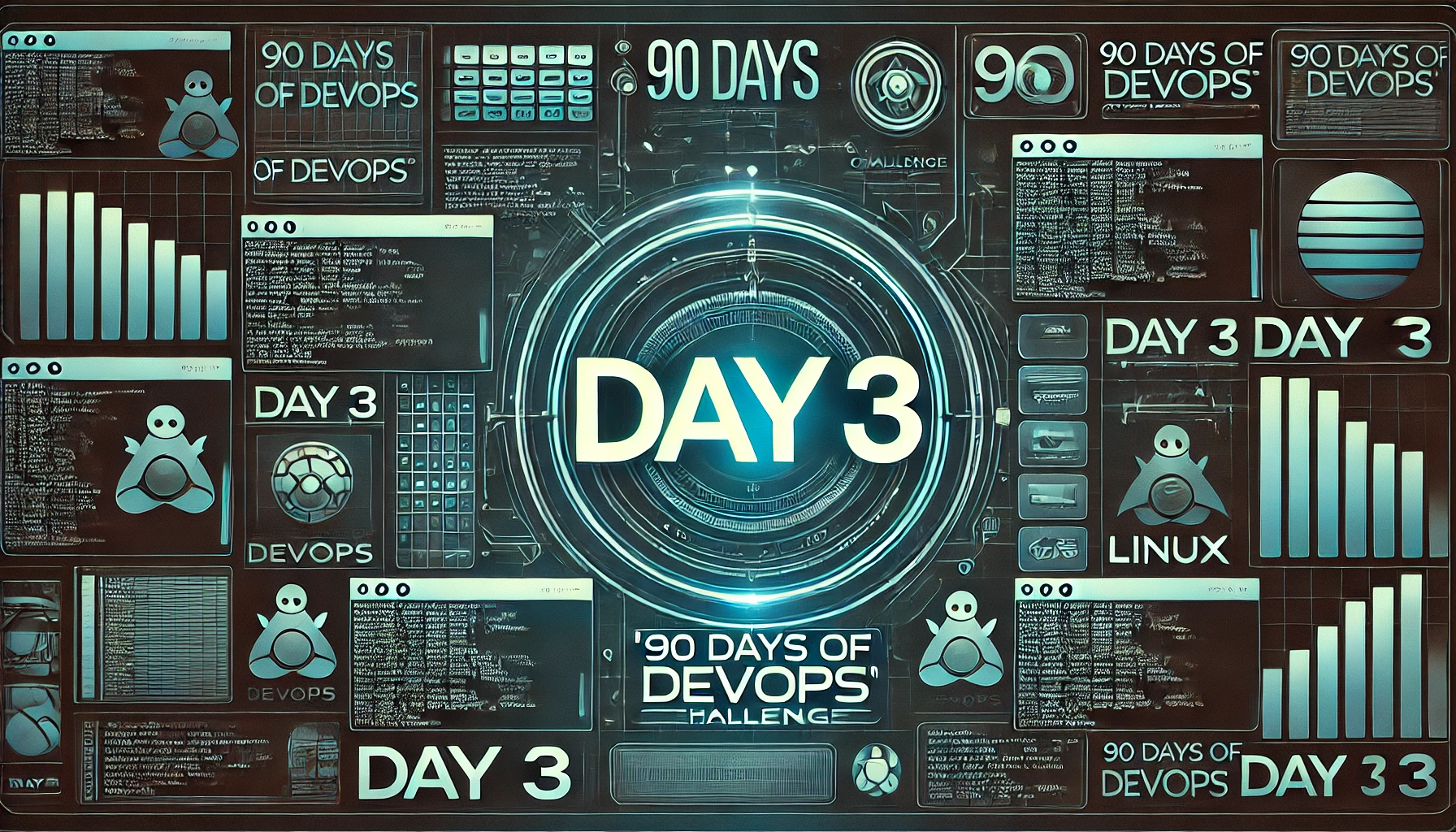Day 3 of 90 Days of DevOps: Exploring the Linux Filesystem and Basic Commands
 ByteMotive
ByteMotive
Introduction
Hello, tech enthusiasts! Welcome back to Day 3 of our 90 Days of DevOps journey. Today, we’re diving into a cornerstone of DevOps: the Linux filesystem and basic Linux commands. If you followed along yesterday, you’ve already installed Linux on your laptop (great job!). Now, it’s time to explore this powerful operating system that underpins servers, cloud platforms, and automation workflows. Whether you’re a beginner or brushing up your skills, understanding Linux is a must for any DevOps engineer.
Wondering how to master Linux commands? Don’t worry—ByteMotive is here to clear up your doubts and guide you step-by-step through this essential topic!
📂 What Is the Linux Filesystem? A Beginner’s Guide
The Linux filesystem is a hierarchical structure that organizes everything on your system, starting from the root directory (/). Think of it as the backbone of your Linux environment. Knowing its key directories is critical for managing servers, debugging issues, and automating tasks in DevOps.
Here’s a quick breakdown of the most important directories:
| Directory | Purpose |
/ | Root directory (the starting point) |
/bin | Essential binaries (e.g., ls, cat) |
/etc | Configuration files for apps and system |
/home | User home directories |
/var | Variable data (e.g., logs in /var/log) |
/tmp | Temporary files (cleared on reboot) |
/usr | User utilities and applications |
/opt | Optional or third-party software |
/dev | Device files (e.g., drives, USBs) |
/proc | Virtual filesystem for process info |
Pro Tip: Want to visualize the structure? Install the tree command (sudo apt install tree for Ubuntu or sudo yum install tree for CentOS) and run tree / to see the directory layout.
🛠️ Essential Linux Commands for DevOps: Your Toolkit
Let’s get hands-on with the basic Linux commands every DevOps engineer needs. These will help you navigate, manage files, and monitor systems—skills you’ll use daily in your DevOps career.
🔍 1. Navigating the Linux Filesystem
pwd– Displays your current directory (e.g.,/home/user).ls– Lists files in the current directory.ls -l– Detailed view with permissions and sizes.ls -a– Shows hidden files (e.g.,.bashrc).
cd <directory>– Changes your directory.cd ..– Moves up one level.cd /home/user– Jumps to a specific path.
📂 2. Managing Files and Directories
touch file.txt– Creates an empty file.mkdir new_folder– Makes a new directory.rm file.txt– Deletes a file.rm -r folder/– Removes a directory and its contents.
mv file.txt /path/– Moves or renames a file.cp file.txt /path/– Copies a file to a new location.
📄 3. Viewing and Editing Files
cat file.txt– Displays the entire file content.less file.txt– Views files page-by-page (useqto quit).nano file.txt– Opens a simple editor for quick edits.vim file.txt– Opens the powerful Vim editor (pressito edit,:wqto save and quit).
🛑 4. Process Management
ps aux– Lists all running processes.toporhtop– Monitors system performance in real-time (htopis more user-friendly if installed).kill <PID>– Stops a process by its ID (find the PID withps aux | grep <process-name>).
🔒 5. File Permissions and Ownership
chmod 755script.sh– Sets permissions (e.g., read/write/execute for owner, read/execute for others).chown user:group file.txt– Changes file ownership.
🌍 6. Network and System Monitoring
ifconfigorip a– Shows network interface details.pinggoogle.com– Tests network connectivity.netstat -tulnp– Lists open ports and connections.df -h– Checks disk space in a human-readable format.uptime– Displays system runtime and load.
🏆 Why These Skills Matter in DevOps
Linux powers the majority of cloud computing platforms, containers (like Docker), and automation tools (like Ansible). Mastering the filesystem and these commands gives you the confidence to:
Navigate server logs (e.g.,
/var/log).Manage configuration files (e.g.,
/etc/nginx).Troubleshoot issues on production systems.
This is your foundation for the 90 Days of DevOps challenge—and beyond!
🔥 Next Steps for Day 3
Practice: Open your Linux terminal and try these commands. Create a file, move it, and check your disk space.
Learn More: Use
man <command>(e.g.,man ls) for detailed documentation.Stay Tuned: On Day 4, we’ll dive deeper into Linux permissions and process management—key skills for securing and optimizing systems.
Final Thoughts
Day 3 of the 90 Days of DevOps challenge is all about building a solid Linux foundation. Whether you’re managing servers or automating workflows, these skills are your steppingstones to success. Keep coding, keep learning, and let’s crush this journey together!
Happy coding, techies! 🚀💻
Subscribe to my newsletter
Read articles from ByteMotive directly inside your inbox. Subscribe to the newsletter, and don't miss out.
Written by
